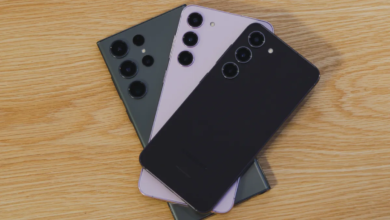6 Tips to Make Your Android Phone Easier to Use: Step by Step Guide

Customizing Your Home Screen
The home screen is the gateway to your Android phone’s functionality. By organizing your icons and widgets strategically, you can streamline access to your most-used apps and features. Consider grouping similar apps into folders to reduce clutter and make navigation more intuitive. Experiment with different layouts and wallpapers to personalize your home screen to suit your style and workflow.
Optimizing Settings for Accessibility
Android offers a range of accessibility features to accommodate users with diverse needs. Adjusting font size, display settings, and contrast can enhance readability for those with visual impairments. Enable features like TalkBack for spoken feedback and gesture navigation for intuitive control, making your device more user-friendly for everyone.
Utilizing Gestures and Shortcuts
Gestures and shortcuts are powerful tools for navigating your Android phone efficiently. Familiarize yourself with gesture controls like swiping, pinching, and double-tapping to perform actions quickly. Customize shortcuts for tasks you perform frequently, such as composing a text message or opening a favorite app, to streamline your workflow and save time.
Installing User-Friendly Apps
The Google Play Store offers a vast selection of apps designed to improve productivity, organization, and convenience. Explore categories like productivity tools, task managers, and personalization apps to find ones that suit your needs and preferences. Look for user-friendly interfaces, intuitive navigation, and positive reviews to ensure a smooth user experience.
Managing Notifications
Notifications can be helpful reminders or distractions, depending on how they’re managed. Take control of your notification settings by prioritizing important alerts and muting or disabling less critical ones. Consider using features like notification channels to categorize notifications by type or source, allowing you to stay informed without feeling overwhelmed.
Streamlining App Usage
Over time, your Android phone may accumulate unnecessary data and clutter, slowing down performance. Take proactive steps to streamline your app usage by clearing cache, uninstalling unused apps, and optimizing storage space. Regular maintenance can help keep your device running smoothly and ensure you have the resources you need when you need them.
Enhancing Battery Life
Battery life is a common concern for smartphone users, especially those who rely on their devices throughout the day. Maximize your Android phone’s battery life by adjusting settings like screen brightness, background app activity, and location services. Consider using battery-saving modes or optimizing apps that consume excessive power to prolong battery life between charges.
Ensuring Security and Privacy
Protecting your personal data and privacy is paramount when using any digital device. Take proactive measures to secure your Android phone by enabling features like screen locks, encryption, and remote tracking and wiping. Be mindful of the permissions you grant to apps and regularly review your privacy settings to minimize risks and vulnerabilities.
Regular Maintenance and Updates
Keeping your Android phone up to date with the latest software updates and security patches is essential for optimal performance and security. Set your device to receive automatic updates or check for updates manually regularly. In addition to system updates, keep your apps up to date to ensure they have the latest features and security enhancements.
Troubleshooting Common Issues
Despite your best efforts, you may encounter occasional glitches or problems with your Android phone. Familiarize yourself with common issues and their solutions, such as frozen screens, unresponsive apps, or connectivity problems. Troubleshooting tips and resources provided by Android forums and support communities can help you resolve issues quickly and effectively.
User Feedback and Support
Your feedback is invaluable in shaping the future of Android devices and software. Share your experiences, suggestions, and concerns with the Android community and developers to help improve usability and user satisfaction. Take advantage of online forums, feedback channels, and support resources to connect with fellow users and receive assistance when needed.
Staying Informed About New Features
Android is constantly evolving, with new features and updates released regularly. Stay informed about the latest developments by following official Android blogs, social media accounts, and news sources. Participate in beta programs and early access opportunities to test new features and provide feedback, ensuring that future updates meet your needs and expectations.
Read More: 6 Tips to Make Your Android Phone Easier to Use: Step by Step Guide
Conclusion
FAQs
Can I revert changes if I don’t like them?
Yes, most customization options on Android are reversible, allowing you to experiment without permanent consequences.
Will optimizing settings affect my battery life?
Adjusting settings like brightness and background activity can improve battery life by reducing unnecessary power consumption.
Are there any risks to installing third-party apps?
While the Google Play Store vets apps for security, it’s essential to exercise caution and research before installing unfamiliar apps to avoid potential risks.
How often should I perform maintenance tasks on my Android phone?
Regular maintenance, such as clearing cache and updating apps, should be done periodically to ensure optimal performance.











